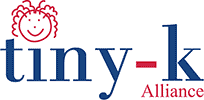|
The Early Education Center team has given this mother and father a sense of relief by having experts help us do the best for our child. The rewards of this program are amazing for the child and a true blessing to the heart of a mother scared for her child and her future.
I pray each and every child who struggles will have access to the resources of the Infant-Toddler Program. Thank you for providing this service and resource. This is a program that needs to be supported and grown. Sincerely, Carrie Bohren 3208 N Sandy Hollow Dr Hutchinson KS 67502 |
| Tiny-k Alliance Advocacy Brochure | |
| File Size: | 596 kb |
| File Type: | |
|
Lobbying by 501(c)(3) nonprofits is an influential strategy for making positive change for people and communities. Effective advocacy builds the capacity, effectiveness and impact of an organization. It enables charitable organizations to achieve systemic, long-term change – realizing the greatest good for the greatest number of the people.
|
Legislation passed by Congress in 1976 made it possible for nonprofits to lobby freely for their causes, communities and individuals they serve. The law and IRS regulations offer broad opportunities for nonprofits to lobby. However, nonprofits should elect to be covered to benefit from the broad latitude allowed.
Generally, nonprofits should file the one-page form to elect the 501(h) test. Doing so provides generous limits on how much can be spent on lobbying, and it provides very clear and helpful definitions of what activities related to legislation do not constitute lobbying. Electing organizations may spend 20% of the first $500,000 of their annual expenditures on lobbying ($100,000), 15% of the next $500,000 and so on up to $1 million a year. For nonprofits not choosing the 501 (h) election, your lobbying must be “insubstantial.” This is a vague term that has never been defined. If you remain subject to this rule, you cannot be certain how much lobbying your charity can do.
For more information and great resources, visit The Center for Lobbying in the Public Interest at http://www.clpi.org.
Generally, nonprofits should file the one-page form to elect the 501(h) test. Doing so provides generous limits on how much can be spent on lobbying, and it provides very clear and helpful definitions of what activities related to legislation do not constitute lobbying. Electing organizations may spend 20% of the first $500,000 of their annual expenditures on lobbying ($100,000), 15% of the next $500,000 and so on up to $1 million a year. For nonprofits not choosing the 501 (h) election, your lobbying must be “insubstantial.” This is a vague term that has never been defined. If you remain subject to this rule, you cannot be certain how much lobbying your charity can do.
For more information and great resources, visit The Center for Lobbying in the Public Interest at http://www.clpi.org.



